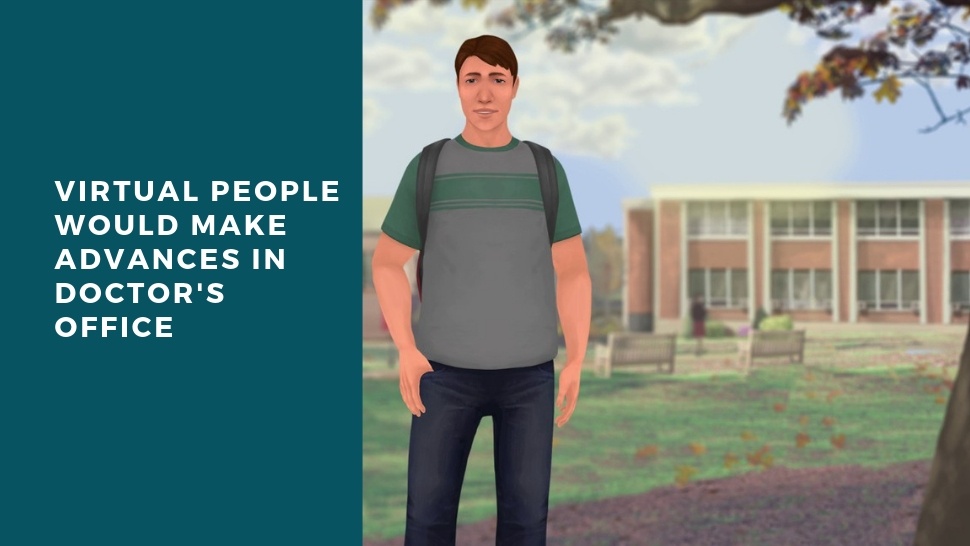Simulations like games train health workers to be more empathetic and engage in conversations about difficult issues such as mental health. Sit down to talk to your doctor, but you feel that he is rushed to the next patient. Add to that the lack of a doctor's training in effective communication with patients and it's almost impossible to have a good conversation about your health. But virtual people could help change that. Simulations that use virtual patients to train health workers to be more empathetic and to deal with important conversations on topics such as mental health and substance abuse.
One health simulation company, “Kognito”, uses game technology and virtual patients to create false clinical scenarios in which real-life practitioners, nurses and other practitioners practice different conversation flows to see how virtual patients respond. They then receive real-time feedback on how to conduct more effective and meaningful conversations.

"Simulations and technology games can help create a safe environment for people to learn through practice," co-founder and CEO of Kognito Ron Goldman said. "There is no risk. In a simulated environment, I can try to do things that, in real life, could have a bad effect on people's health."
Virtual people are also used in other areas of health care, from increasing the honesty of patients with doctors, as long as they potentially become a field for testing new drugs for the heart. A study last year revealed that virtual people can help medical students learn empathy to improve patient interaction and report bad news.
Assessment of mental health is another critical area that could be used by technology. An increasing number of Americans are seeking mental health services because the United States faces a major lack of psychiatrists. Many patients are turning to primary care doctors because they come to them more easily than mental health specialists, says Dr. Asim Shah, a psychiatrist professor at the Bailor College of Medicine.

However, many primary care doctors do not have many contacts with mental health or psychiatry during their training, so they are often unable to diagnose things like anxiety, depression, and insomnia. In one study, US primary care physicians spoke of suicide in 11 percent of meetings with patients who, without their knowledge, had suicidal thoughts. In addition, only 36 percent of doctors examined suicide in patients who showed great depression, an adjustment disorder, or who sought antidepressants.
"Many providers of medical services sometimes do not feel comfortable in this subject [mental health] and are simply not sure how to best ask questions," said Melissa Frick, a nurse at the Loyola Wellness Center School at Chicago University. In January, this center began to use Kognito to enhance the training of medical staff on health behavior. Other services, such as i-Human Patients and Simtabs, also enable students and health service providers to practice patient dialogue, assessment, and diagnosis.
"Simulation provides a good opportunity for service providers to learn so that they really try and watch sessions themselves, and feel like they could personally have a similar experience," Frick said.

Attempts and mistakes
The simulation begins by providing general tips: Sit with an eye-level patient to relax, ask open-type questions to get more information and save time and repeat the patient's statements with your words to show that you are listening and care.
In the upper left corner there is a bubble that says "speak", and it opens up to me things you can say or do, such as discussing a complaint, talking about drugs, or doing a review.
If you say something that encourages a patient to close or take a defensive attitude, a virtual psychiatrist will offer you advice on how to make an engaging and useful conversation. According to the simulation, you need to get enough information within three to five minutes to determine if a patient has a mental health disorder.

The company claims that its simulations prove to work. Quarterly simulation tracking studies showed an increase of 51 percent in identifying substance-using patients, or with a mental disorder. There has also been an increase in the number of patients examined by 62 percent and an increase in the number of treatments on treatment options by 60 percent. "It's not something you'll learn by reading a PDF or watching a movie," Goldman said. "You really have to practice this."
Discussions about AI and virtual people often raise concerns about the technology that takes over the affairs of "real" people. Lok says these fears are unfounded; they are just trying to create the opportunity for people to practice communication.




Share the News